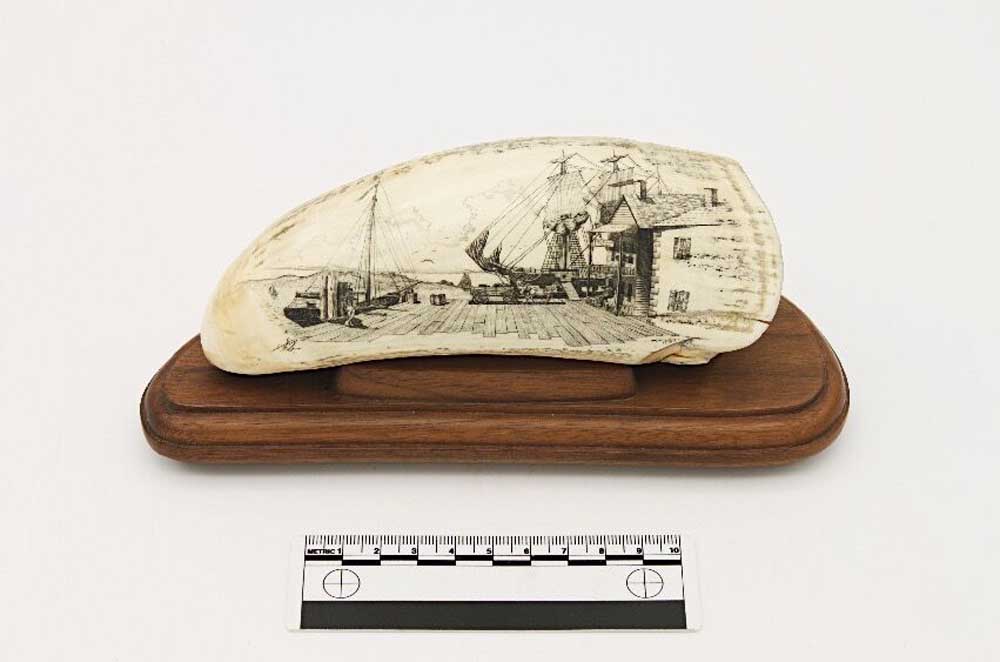Weekend Break: Scrimshaw art of American whalers
Published 1:00 pm Friday, January 28, 2022

- This sperm whale tooth is decorated with a maritime scene.
Scrimshaw, or artwork made typically from whale bones or teeth, is often considered one of the first truly American folk arts.
American whaling ships based on the East Coast during the 1700s and 1800s invested in their art as a way to pass the time onboard during long voyages.
Whaling ships had more sailors on board than the average sailing ship to hunt and process whales when they found them. However, there was also a lot of down time as the whalers sought out their targets.
When all the chores onboard were completed and there was nothing better to do, whalers turned to scrimshaw.
Most traditional scrimshaw was made from whalebone or sperm whale teeth.
Sperm whales were especially important to the whaling industry because of the highly-prized spermaceti stored in the tops of their heads, which burned brighter and clearer than other whale oils.
When first harvested, sperm whale teeth have a very rough, ribbed texture. The sailor would file away the roughest textures on the surface of the tooth and sandpaper it down, often with harvested sharkskin.
Then they would turn to the tryworks, where the whale blubber would be processed into the oil whalers were after.
After rubbing it down with pumice, the sailors would begin carving. They would use jack-knives, sail needles and other homemade tools for their designs. Every now and then, an officer would have special engraving tools with them for their art.
After the whaler had a design they were happy with, they would rub lamp black over the tooth. Wiping away the lamp black from the surface would reveal the now-dark designs that stood out in the whaler’s engravings.
Scrimshanders were often carving under less-than-ideal conditions, which could affect their end product. Heavy moisture and seaspray could make surfaces difficult to carve on, and sailors traveling through colder climates might have frozen fingers that couldn’t carve anything.
There was a wide range of maritime designs the carvers would incorporate into their work. Images of sailing ships were the most common, but there were also depictions of mermaids, sea monsters, lighthouses and famous battles at sea.
Whaling voyages could go on for years — the Nile famously broke records in the 1850s and 1860s for a voyage that went on for 11 years.
Everyone on board had to come to terms that they wouldn’t see their friends, family or homes during that time. Many scrimshaw pieces stray from strictly nautical themes and show more nostalgic images of a sailor’s home life because of this.
They were also often given as gifts to loved ones once the whaling ship had returned home. Pieces could be decorative as well as useful. Besides intricate whale teeth, carvers also crafted napkin rings, busks for women’s corsets, pie crimpers, canes or other household items.
While some scrimshaw collectors are more exclusive about what they consider to be real scrimshaw, others say that tortoise shell, walrus tusks and elephant ivory were also part of the art form. Whalers would pick these up at various ports of call, and the materials were fair game for carving.
Whatever materials that may have been used, scrimshaw often brought sailors’ worlds at home and sea together.





